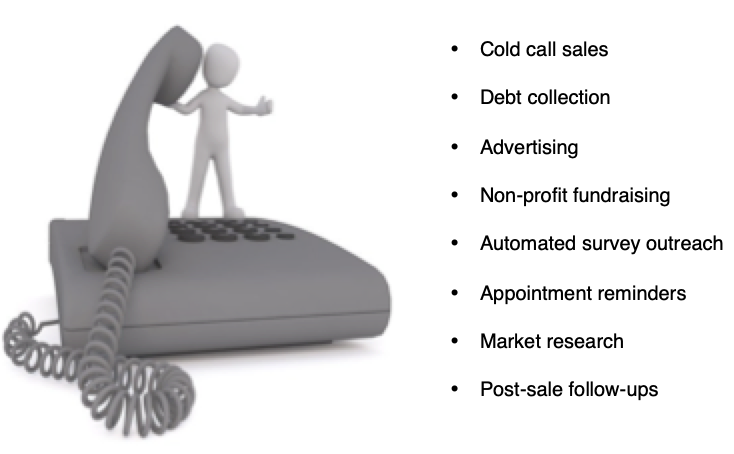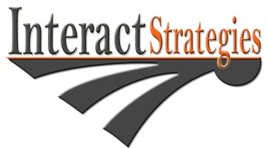Contact centers are technology-driven and the most successful companies utilize systems with advanced technological capabilities. This includes utilizing dialing strategies that streamline processes and help users gain invaluable insights into center operations. Outbound calls are calls that are initiated by a call center representative to existing or potential clients/customers. Calls are a central part of any organization and can be initiated for various reasons. Some common motives for outbound dialing campaigns include, but are not limited to:

Why are companies implementing outbound dialer campaigns?
Companies experience a wide range of benefits after the implementation of outbound calling services. Not only ranging from lead generation and improvement in customer interactions, but also increased customer satisfaction and retention rates. Well-designed outbound dialing campaigns are also more cost-effective than traditional dialing methods. This is a result of less downtime between calls and a general increase in successful daily outreach.
How outbound dialer technology is making a difference
 The configurations of Genesys Cloud outbound dialer can be made simple or more complex depending on the needs and goals of a company and the outbound dialer campaign. One of the key ways this is achieved is through the dialing mode assigned to the campaign.
The configurations of Genesys Cloud outbound dialer can be made simple or more complex depending on the needs and goals of a company and the outbound dialer campaign. One of the key ways this is achieved is through the dialing mode assigned to the campaign.
Dialing mode is the campaign setting that determines how the campaign dials contacts from the associated list. Each outbound dialing campaign can be assigned a different dialing mode in order to best address the needs and goals of each outbound campaign. What’s more is that based on the assigned dialing mode, critical information from the contact list can be presented to the relevant agent before dialing begins or, conversely, calls can be matched to an agent only after the campaign system determines it has reached a live party.
Current outbound dialing technology allows for many unique dialing modes which determine when and how the calls associated with a campaign will be placed. Some of the most common dialing modes include, but are not limited to:
- Preview dialing mode – Typically used to reach contacts of high value. This mode presents relevant information about the contact to the agent so the agent can determine if the call should be initiated. With this mode the agent hears all pre-connect audio and determines whether the call reaches the contact. Optionally, a preview timer countdown may be configured which enables the system to automatically dial the contact when the timer runs out if the agent has yet to place or skip the call.
- Agentless/ Robo dialing mode – Like its name suggests, this dialing mode does not use agents or scripts. The campaign responds to live contacts and answering machines based on configured settings. For example, campaigns can be configured to disconnect or leave a predetermined message when an answering machine is reached, transfer to an agent or play a message when connected to a live party. This dialing mode works well for appointment reminders or other important notifications for established clients.
- Intelligent dialing modes – Automatically dials contacts for agents. The key benefits of this dialing mode are that call abandonment risk is minimal and this mode is efficient because calls are dialed automatically. The system then automatically dials enough numbers to ensure that at least one live person answers. If the system determines that call abandonment risk is low, it increases the number of calls for each idle agent. Likewise, the system also assesses if it reaches an abandonment threshold and slows down when there aren’t enough agents to manage bridged ‘calls’.
- Just in time dialing modes – Allow callers and/or agents to schedule callbacks for a time that is convenient for them. This dialing mode also allows for callers to exit a queue while maintaining their spot in the queue and ensuring that they will receive a call from an agent when its their turn.
Keys to a successful outbound dialer campaign
- Set well-defined metrics, KPIs and goals:
 It’s important to spend time evaluating goal and defining appropriate metrics and KPIs that match them and lead to success. According to a recent article released by Convoso, the top agent KPI include agent talk time, wrap-up time, calls per agent, first call resolution and number of sales/ revenue per agent. Not all KPIs are a direct result of an agent’s performance. Abandoned call rate, average hold time and dropped call rates are common KPIs that are more attributed to the efficiency of a company’s dialer settings.
It’s important to spend time evaluating goal and defining appropriate metrics and KPIs that match them and lead to success. According to a recent article released by Convoso, the top agent KPI include agent talk time, wrap-up time, calls per agent, first call resolution and number of sales/ revenue per agent. Not all KPIs are a direct result of an agent’s performance. Abandoned call rate, average hold time and dropped call rates are common KPIs that are more attributed to the efficiency of a company’s dialer settings.
- Track and analyze campaign data: If campaigns and call data are effectively tracked, supervisors can learn which agents and campaigns are performing well and which aren’t. They also provide an objective way at measuring individual agent performance. This provides opportunities to offer support and make changes when necessary.
- Define attainable quotas: Quotas should be challenging, but not impossible to attain. There should also be a plan to reward high-performers.
- Record and review client interactions: Doing this offers an opportunity to assess the quality of interactions and help train agents to manage calls effectively and efficiently.
- Personalize scripts and provide essential training: Scripts are an invaluable tool in supporting agents. Scripts allow agents to pull up data from a CRM and use this data to personalize calls. The use of a script will give uniformity to the calls that take place. It also provides a place where agents can easily view and enter call data.
- Determine the best dialing mode to achieve campaign goals: The various dialer modes all come with a variety of benefits and potential weaknesses depending on the goals of a particular campaign. This is why it is important to analyze the intended use and goals of a campaign before setting a dialing mode.

